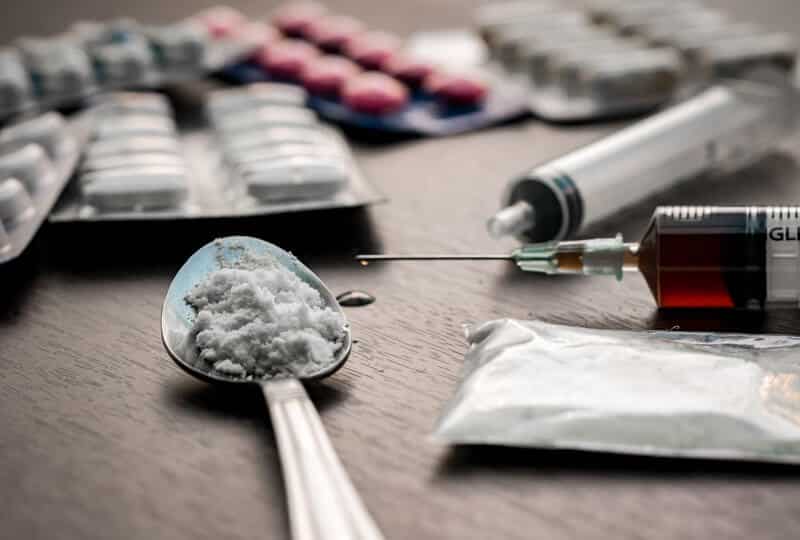What are Opiates and Opioids?
Opiates are a group of narcotics, either natural, partially synthetic, or synthetic, derived from the poppy plant or chemically synthesized in laboratory settings. Most forms are created synthetically, but there are a few naturally occurring forms, such as morphine and opium. This class of drugs includes both legal and illegal drugs. Legally prescribed opioids, like morphine, codeine, and oxycodone, are usually prescribed for pain relief and to induce sleep. The opioids are often used illegally without prescription. Heroin is an example of an Illegal opiate. All opioids are considered highly addictive, mainly because of the intense euphoric feeling it induces, as well as their pain-relieving properties. Unfortunately it is all too common for individuals who were initially legally prescribed an opiate, like someone with a pain disorder, to eventually become addicted to or dependent on that narcotic, and end up abusing it illegally.

Opioids are a generic term for all illegal opiates – synthetic opiates. Opioid drugs include heroin and synthetic opioids such as fentanyl, oxycodone, hydrocodone, hydromorphone and oxymorphone. Opioid drugs can be safe when taken under a doctors care. Often they are misused and individuals can become addicted quickly.
US Department of Transportation (DOT) since 2018 has required testing for Expanded Opioids. The DOT drug test panel in addition to codeine, morphine and heroin also includes the Expanded Opioids – hydrocodone, hydromorphone oxycodone and oxymorphone.
For non-DOT drug testing to include Opioids always request a drug test panel with expanded opiates. You can also request a DOT Like panel.
Uses of Opiates
Opiates are most often used legally to help people cope with pain, but they are also commonly used recreationally. Opiates bind to the natural opioid receptors in a person’s brain, imitating specific chemicals that are related to sensations of pleasure, pain relief, and reward. When used properly (as prescribed), legal opiates can be a highly effective form of pain relief, especially if other attempts to relieve the pain have been unsuccessful, or if the pain is very severe. Unfortunately, they are among the most abused types of substances available because of both their positive psychological properties and pain relieving properties.
Often when opiates and opioids are abused or taken illegally, the user alters the route of administration in some way. For example, users frequently grind the pills up into a powder form, which is then either smoked, snorted, and mixed with water and injected straight into the blood stream. Altering the method of ingestion usually drastically increases the speed of absorption, causing the user to experience a “rush” of strong, generally desirable or positive, sensations. Even when taken legally, as prescribed, a patient is likely to experience a lesser effect of those positive sensations, making the potential for addiction and abuse very high, which could require further treatment. Addiction can happen extremely fast, in just a matter of days psychologically, with physical dependence possible within just 4 to 6 weeks.
Effects of Opiates
Opiate abuse and addiction can have a wide variety of negative effects and consequences in all aspects of a person’s life. Some of the more short-term effects, like withdrawal symptoms, can include: nausea, vomiting, diarrhea, sweating, shakes, muscle aches and cramps, anxiety, irritation or agitation, cravings, insomnia, and suicidal thoughts.
Some of the long-term effects that can affect all aspects of a person’s life can include: work and school problems, like attention, productivity, and attendance; social problems, like isolation and losing support from friends and family; financial problems; health consequences like insomnia, lung and liver damage, infections in the heart and pulmonary complications, collapsed veins, kidney damage, and abscesses; death from suicide or overdose; and involuntary commitment to a mental hospital or incarceration for drug related crimes.
Symptoms of Opiates
There are a number of physical, behavioral and psychological symptoms associated with opiate and opioid abuse. Physical symptoms include: physical agitation, increased energy and improved alertness, increased sensitivity to sensory stimuli, increased heart rate, decreased appetite, increased sexual arousal, hyper-vigilance, high blood pressure, constricted blood vessels, and difficulty sleeping.
Behavioral-type symptoms that might be apparent with opiate or opioid abuse include: abandonment of important activities; large amounts of time spent using, obtaining, or recovering from the narcotic; use of the drug in a greater amount, or for longer than intended or prescribed; and unsuccessful attempts to decrease the amount used.
Psychological, or mood, symptoms of opiate/opioid abuse include: a “high” or feeling of euphoria; improved self-esteem; lowered motivation; increased general anxiety or anxiety attacks; irritability; depression; and even psychosis.
Testing for Opiates
Most standard drug tests include an opiate panel for the most common opiates and opioids, with additional extended panels available. The common opiates are codeine, morphine and heroin. The extended panels include hydrocodone and hydromorphone and/or oxycodone and oxymorphone. Urine and hair specimens are the most common methods for opiate/opioid testing. With urine samples, opiates and opiate metabolites are only detectable for about a few hours to about two days after use, sometimes a bit longer for chronic users. The same opiates that are detectable with urine tests are also detectable with hair tests, and are also included in most standard hair follicle drug tests. As with other drugs, opiates and opioids are detectable in the hair for up to 90 days, assuming the hair sample is the standard 1.5 inches. If the hair sample is shorter than 1.5 inches then the detection period will be shorter. Body hair can also be used to test for opiates and expanded opiates. Saliva testing is another possible testing method, though it is still relatively new. The detection period of opiates in saliva is usually up to about 36 hours after use, with chronic use possibly extending the detection period.
Order online urine drug testing or hair drug testing.

Warning Signs
Some of the warning signs of opiate and opioid abuse may be more difficult to recognize then others. If you suspect someone of being addicted to opiates, keep a close eye on them in order to detect consistency with the warning signs. Some of the physical or immediate warning signs include: slow or slurred speech, nausea or vomiting, confusion or disorientation, headaches, cramping, excessive itching, agitation, weight loss, nodding off or “fading” sometimes in the middle of speaking even, sweating and chills, shaking or quivering, enlarged pupils, glassy or red eyes, and hyperactivity.
Some of the more behavioral and psychological warning signs, which usually take a longer observation period to detect, may include: anxiety, depression, lack of motivation, loss of interest or concentration, distorted perception of reality, extreme behavioral changes or mood swings, withdrawing socially, and possibly even stealing from family and friends or other illegal activities.
Some who are addicted to opiates are functional for a while at work. This is harmful for workplace safety and productivity. The addiction typically leads to long term problems and eventually issues at work that can lead to termination of employment.






